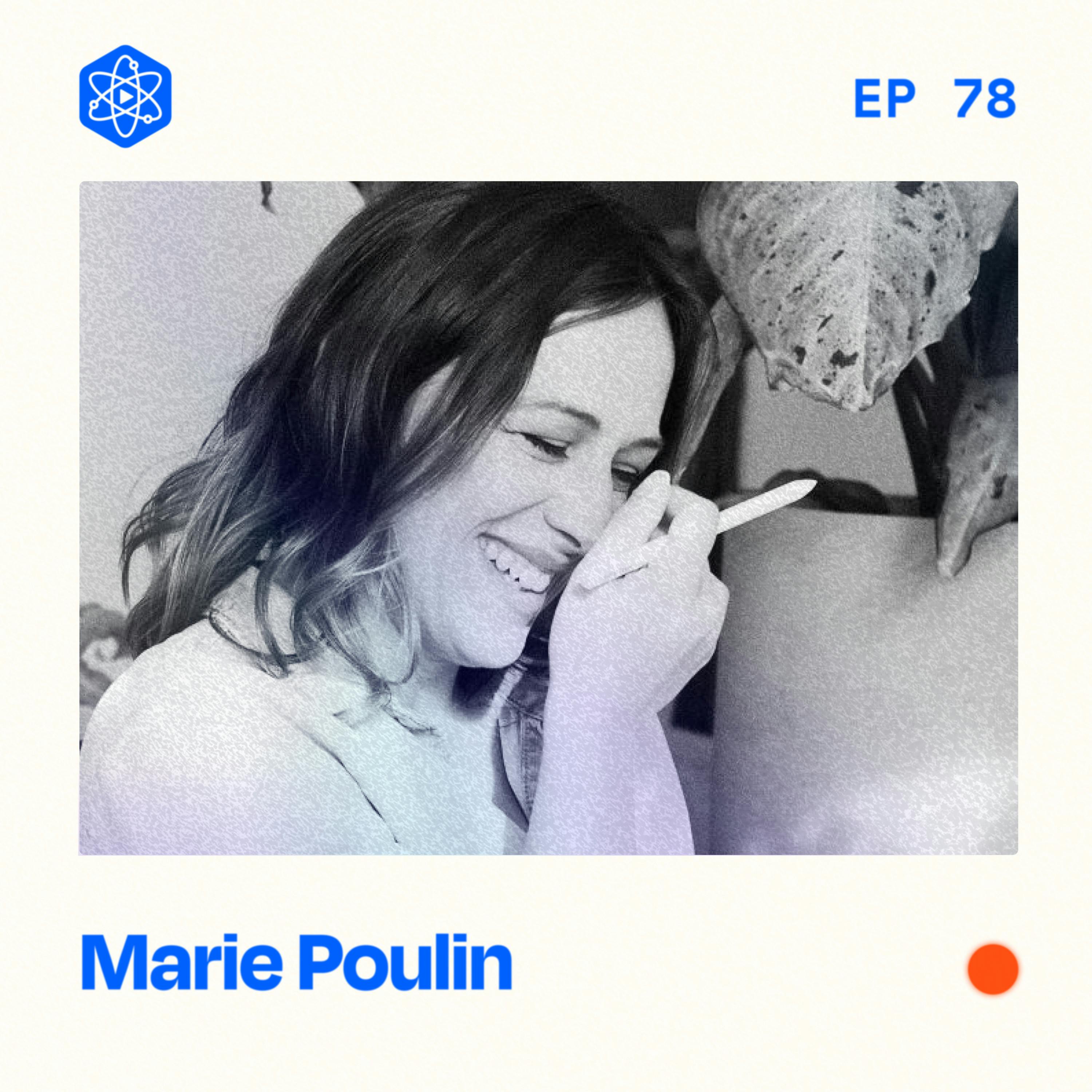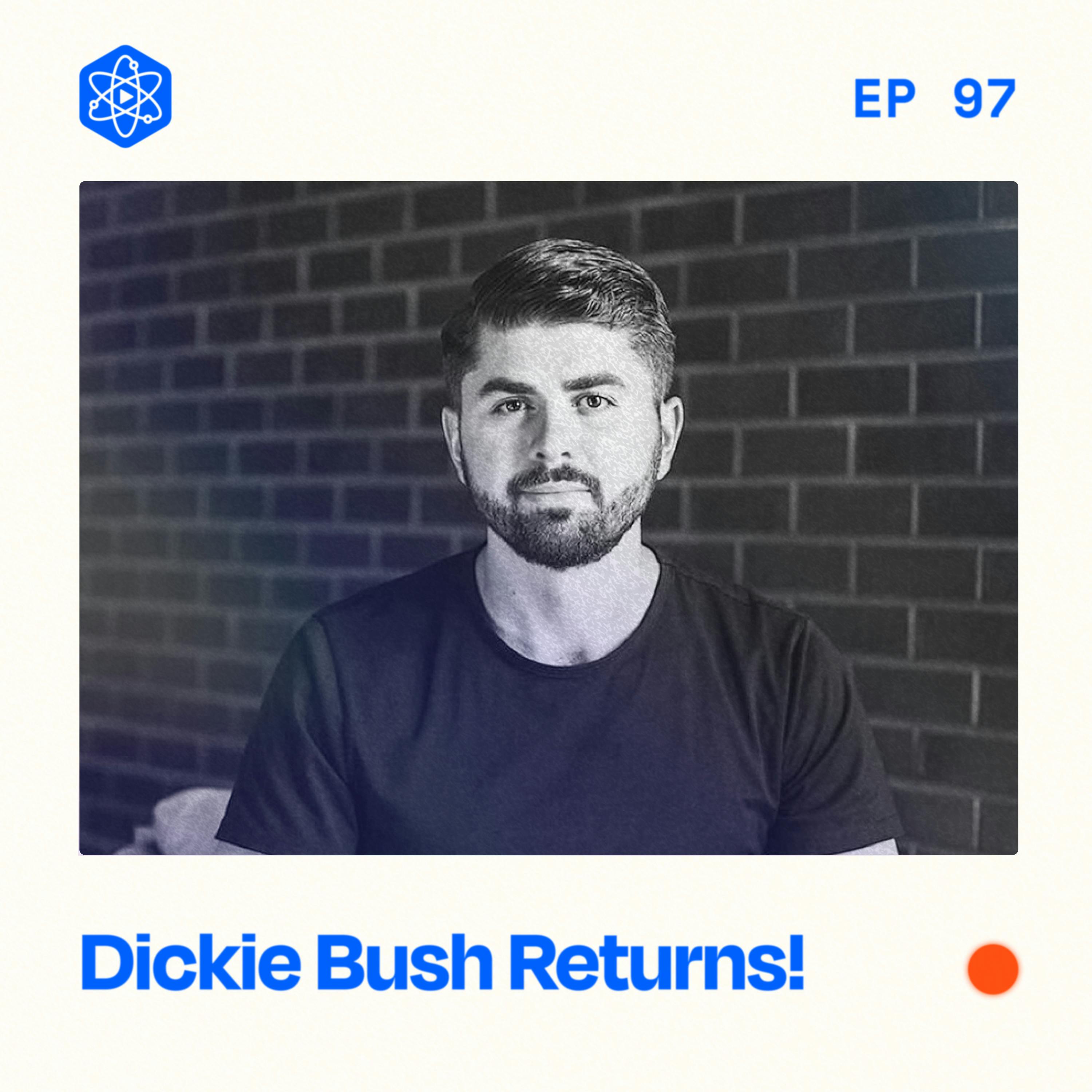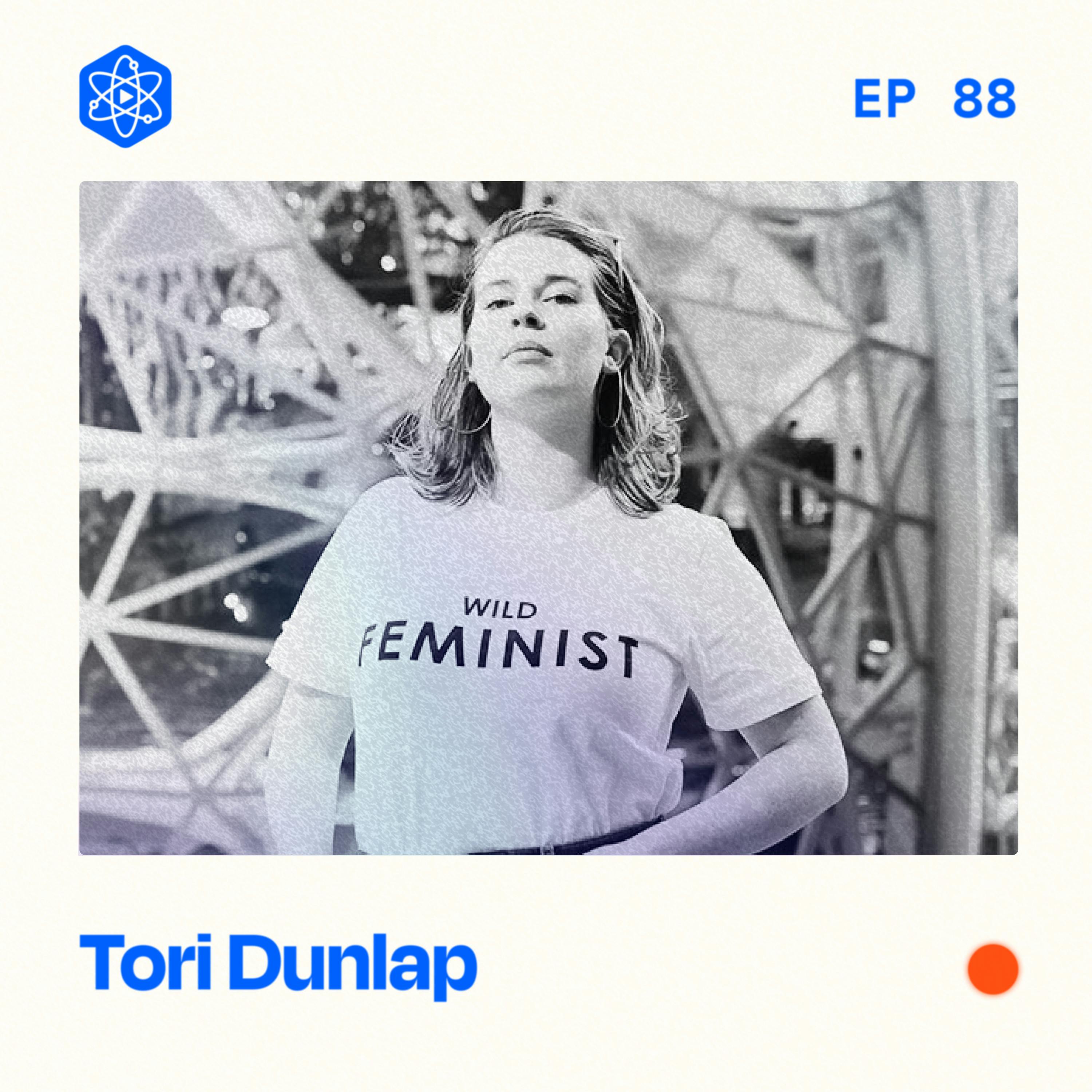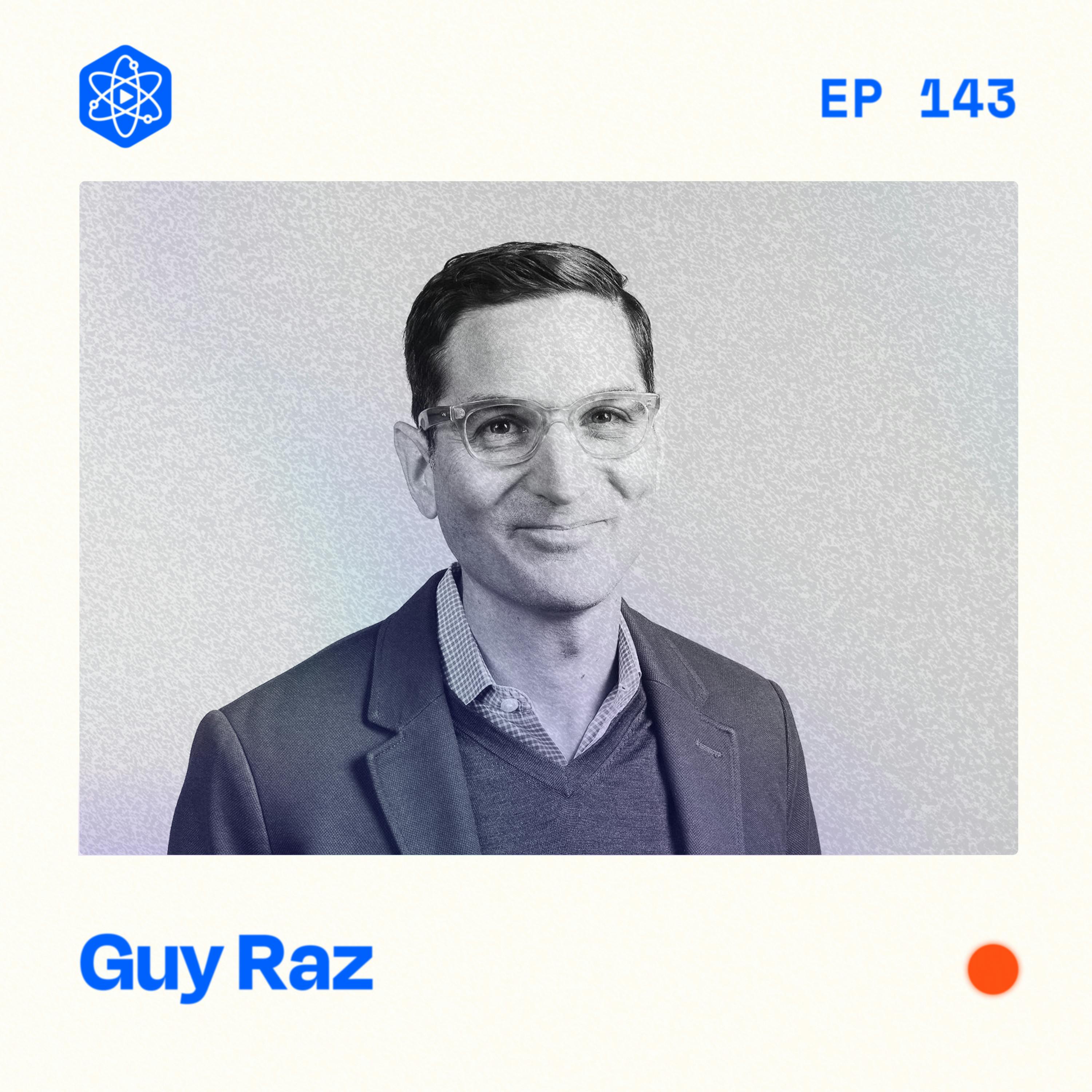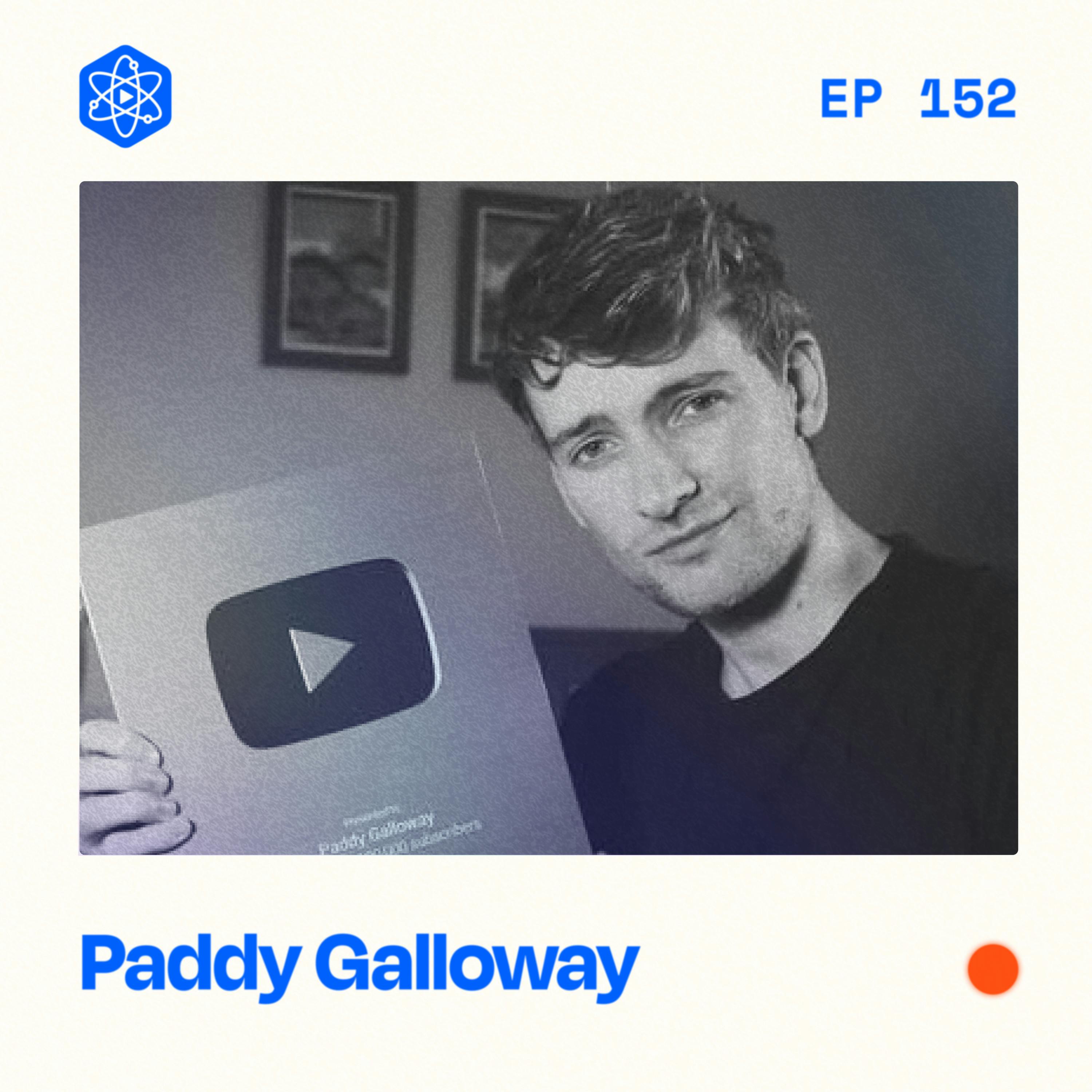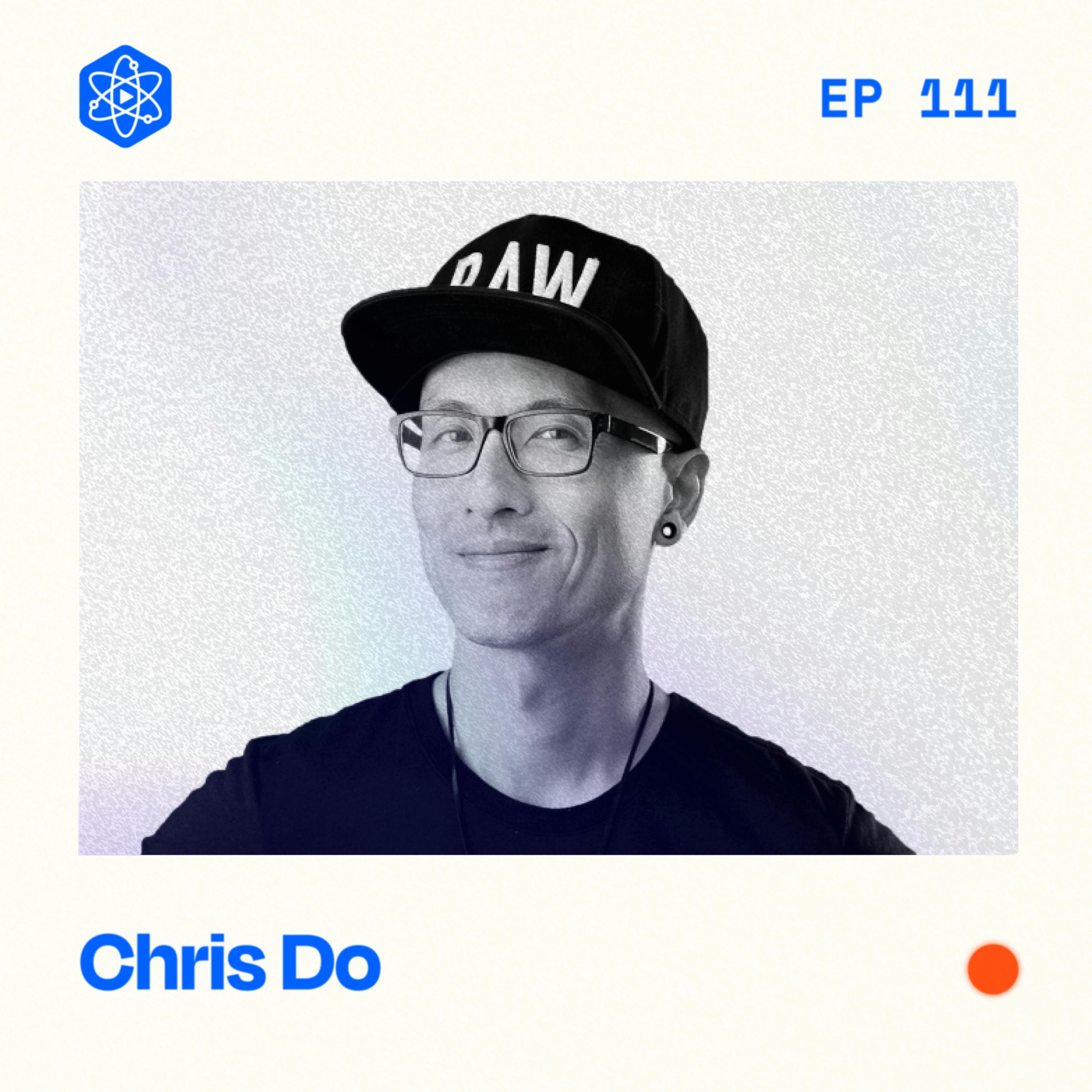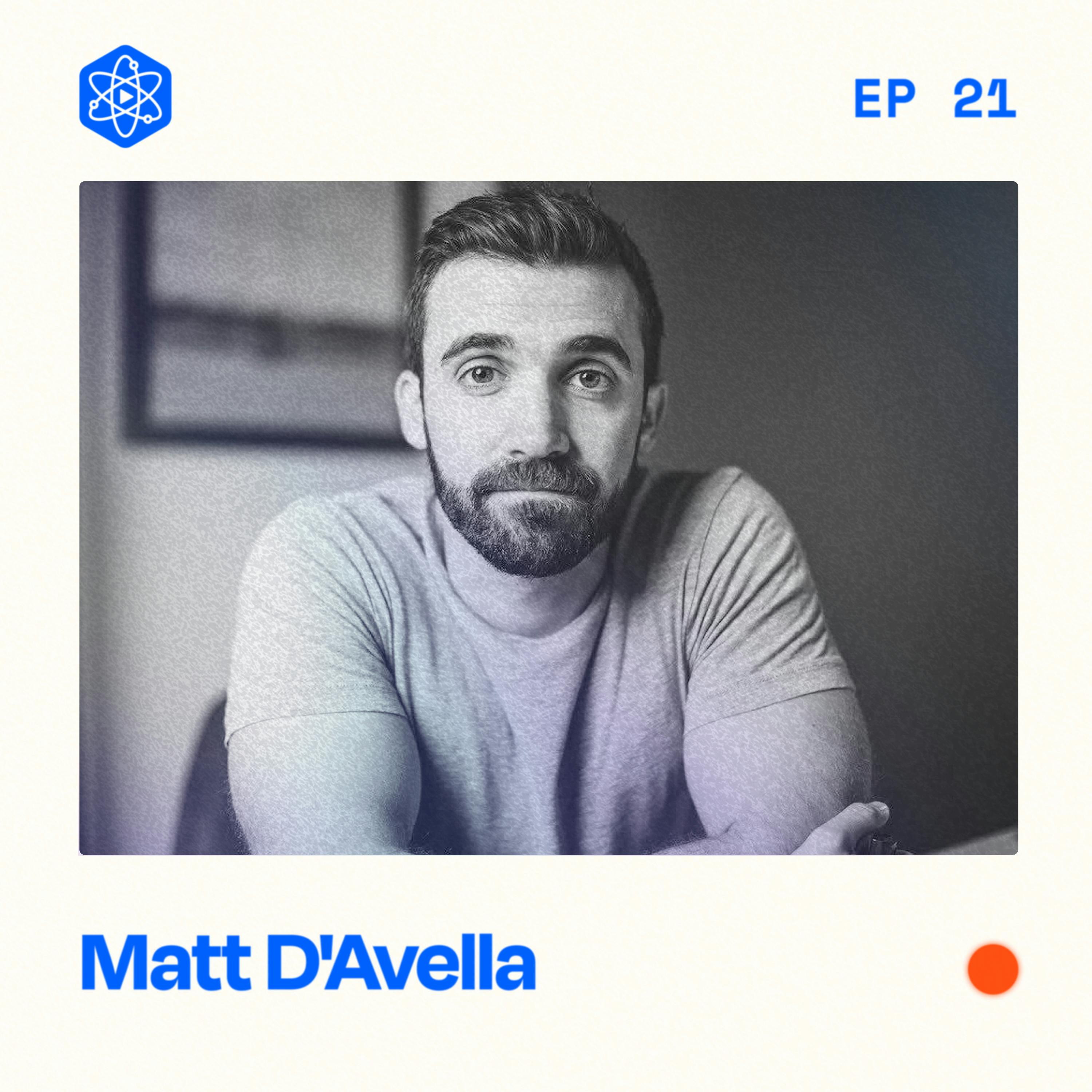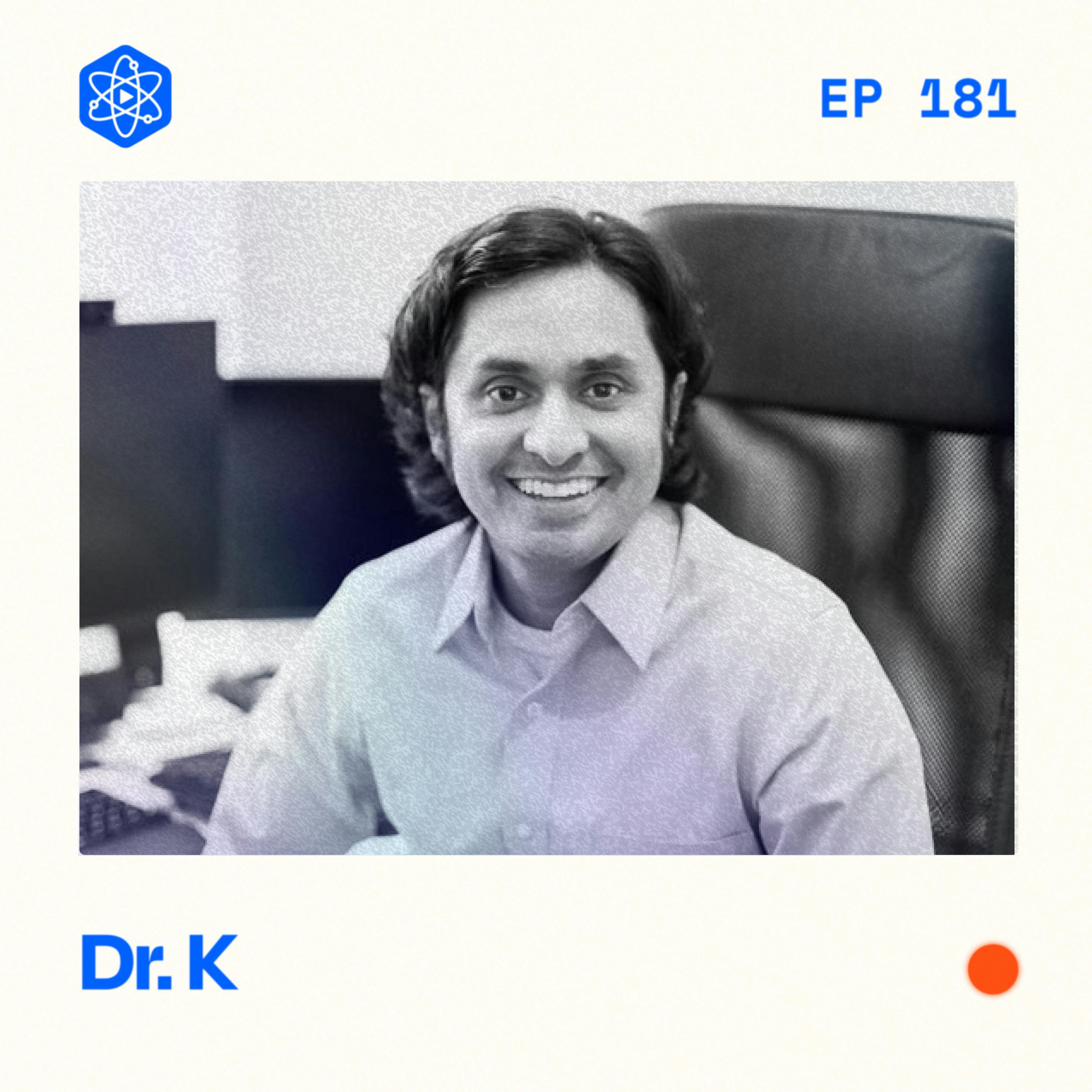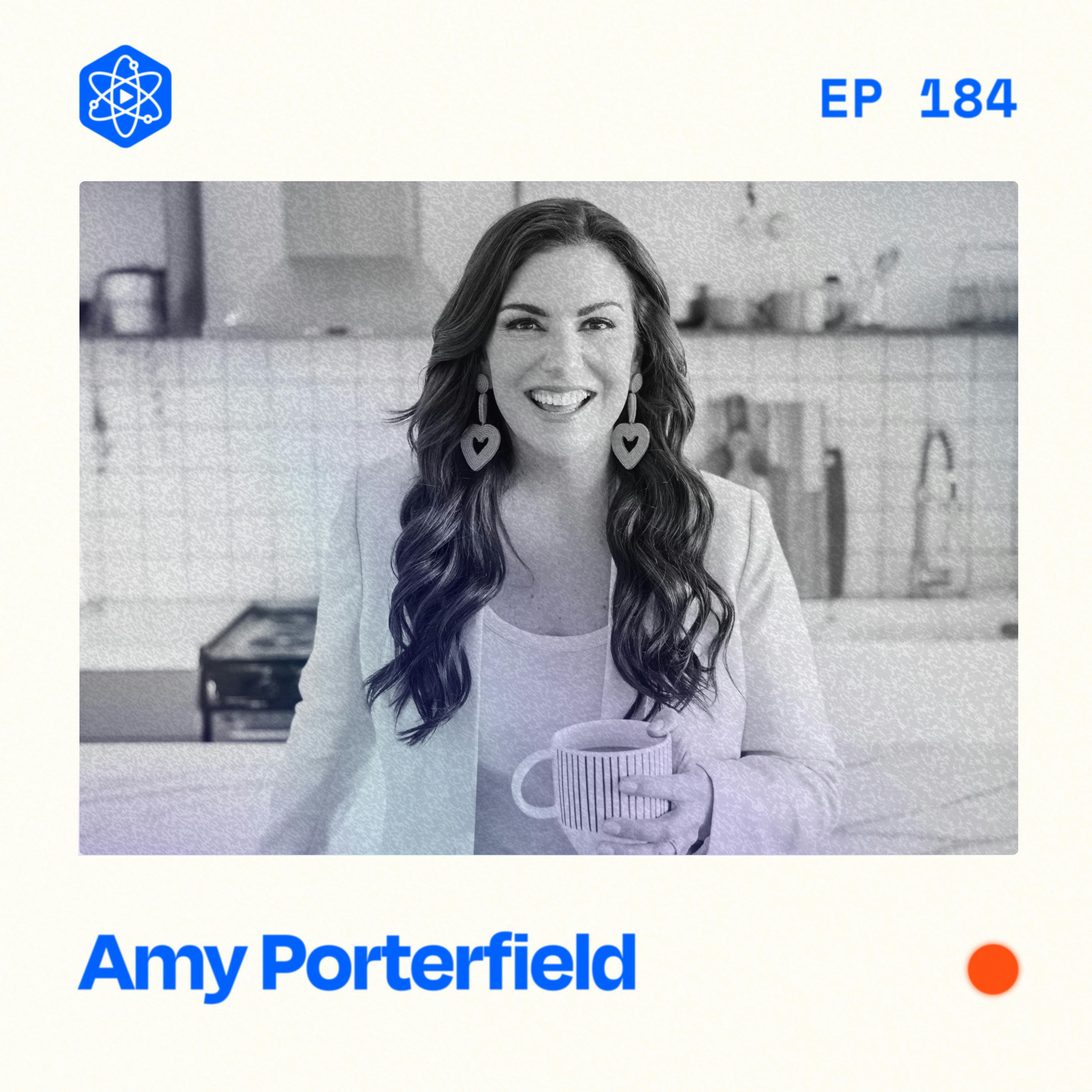Pat Flynn is the creator of Deep Pocket Monster and Short Pocket Monster
Pat Flynn (also known as Deep Pocket Monster or the Should I Open It Or Should I Keep It Sealed Guy) is the man with the most famous thumbs on the Internet. Pat has been a staple in the online business community for over a decade. But it's his short form Pokemon card series, that launched him to new heights. Today, we're breaking down exactly how he did it from the very beginning. In this episode, we talk about embracing your uniqueness, how to find inspiration, and whether or not he would put shorts and long-form videos on the same channel if he were starting over.
Full transcript and show notes
Pat's Website / Twitter / YouTube / Instagram / TikTok
***
TIMESTAMPS
(00:00) The Man Who Solved Shorts
(01:39) How SIOIOSIKIS Almost Failed
(09:52) Differences Between Short Form Platforms
(13:41) Should Shorts Be on A DIFFERENT Channel?
(20:58) How to Innovate Formats
(25:54) Using Voiceover for Storytelling
(33:24) When is it Time to Quit a Project
***
RECOMMENDED NEXT EPISODE
→ #167: Jenny Hoyos – How she averages 10 million views per video (YouTube Shorts)
***
ASK CREATOR SCIENCE
→ Submit your question here
***
WHEN YOU'RE READY
📬 Creator Science Newsletter
🚀 Get CreatorHQ (creator operating system)
🧪 Join The Lab (private membership community)
🧞♂️ Get a Personalized Offer
***
CONNECT
🐦 Connect on Twitter
📸 Connect on Instagram
💼 Connect on LinkedIn
📹 Subscribe on YouTube
***
SPONSORS
💼 View all sponsors and offers
***
SAY THANKS
Pat Flynn [00:00:00]:
I was actually opposed to shorts for the longest time because I thought long form was the only way to build a relationship with an audience. 330 days later, we are now at 3.5 billion views across three different platforms. What I found beyond, like, the numbers and the success behind it was that I was building a relationship with people.
Jay Clouse [00:00:18]:
That's Pat Flynn, the man with the most famous thumbs on the Internet. Pat has been a staple in the online business community for over a decade. But it's his short form Pokemon card series, Should I open it or should I keep it sealed? That launched him to new heights. Today we're breaking down exactly how he did it from the very beginning.
Pat Flynn [00:00:36]:
Day 30 comes around and I'm getting maybe 300 to 500 views for per video in general. I would've probably quit by then because it just didn't seem like a lot of views for the amount of time that I was putting in up front. However, that wasn't the goal. The goal was to get to 60 days. On day 35, it took off.
Jay Clouse [00:00:53]:
We talk about embracing your uniqueness.
Pat Flynn [00:00:56]:
I have now probably the world's most famous thumbs. And I remember in the beginning, people made fun of me for them because the camera's right on my hands. It's like my thumb is huge. And I said, you know what? I'm going to embrace this. I know this is going to work because I've seen this before. When you embrace your weird, you stand out.
Jay Clouse [00:01:11]:
How to find inspiration.
Pat Flynn [00:01:12]:
It's almost like dating. I'm just swiping and swiping and swiping until I find something that captures my attention. And when it does, then I go back and examine it and whether or.
Jay Clouse [00:01:20]:
Not he would put shorts and long form videos on the same channel if he was starting over.
Pat Flynn [00:01:24]:
I don't think so. I'm bothered by YouTube and how oftentimes we get different advice even from different people at YouTube and we see different results based on things. The short form viewer is separate from the long form viewer.
Jay Clouse [00:01:36]:
And now let's hear from the legendary Pat Flynn. Let's talk about that series. Should I open it or should I keep it sealed? When did that come into play? Was that like right at the beginning of your short form video journey or did it take a while for you to get to that format?
Pat Flynn [00:01:51]:
I was actually opposed to shorts for the longest time because I thought long form was the only way to build a relationship with an audience. There are obviously cases that people have built up larger audiences and relationships much faster. But I thought for educational Purposes like this wasn't the key, but I found that like, here's the analogy I used. Short form is like Halloween candy. Like you're passing out Halloween candy. People come to your house, they ring the doorbell, you give them candy, they move on like you're forgotten about. Unless you have the biggest snicker bars on the block, like the king size bars, you're not going to be talked about. Like you're done.
Pat Flynn [00:02:24]:
Whereas like long form videos, you're sitting people down for a meal and there's entree, there's, you know, there's, there's a moosh boujee, there's like the whole experience and that's where you build a relationship. And then they want to come back to the restaurant, order more and then bring their friends and family. This is why I was, I was like, long form is king. So July 2nd was my first video on a brand new shorts channel that I created that was in fact separate from my long form channel. I Com. I completely detached it. I didn't even want to link to it because I wanted to experiment. I didn't want people to, if this succeeded, say, oh, it only succeeded because you linked to it from the other one.
Pat Flynn [00:02:59]:
And I just wanted to use it as a case study. So July 2nd, first few videos, they were completely random because I was finding my footing. They weren't with that jingle, the first one. Actually it was. I went to a Best Buy because they sell Pokemon cards at Best Buy. And I bought cards and I opened them in the car, which is a very relatable thing to do if you are a degenerate Pokemon enthusiast like myself who can't wait home, wait, can't wait till you get home to open these cards and see what's inside. So that was going to be, it was going to be like open cards in the, in the car series. Like that was the idea, but it just didn't feel right.
Pat Flynn [00:03:29]:
And I started to get a lot of people comment and say like, oh my gosh, this guy's pathetic. He can't even wait till he gets home to open these cards kind of thing. And I was just like, okay, I'm going to try something else. So I went to Barnes and Noble, I bought some cards there because the cards were very hard to find elsewhere. And I got home and I tried to do some fancy things with these cards and like it was okay. Then I had a random idea to kind of turn this into a show. And every good show has a jingle. So I hired some friends at Music Radio Creative I had this little phrase, should I open it or should I keep it sealed? Which me as a marketer, I.
Pat Flynn [00:04:01]:
I thought was cool because it kind of opened up that loop of at the end, you're gonna figure out whether it was not. Whether it was worth it or not to open this, right? So I kind of played on that in the beginning in this jingle music. Radio creative came back and it was this woman and Kim who they hired a voice actress who turned it into this, like, really cool old style commercial. Sort of like the O'Reilly. Oh, oh, oh, O'Reilly. Like a really short but catchy earworm. And I was like, wow, this is great. So I put it into a video.
Pat Flynn [00:04:29]:
The Detroit Lions invited me to the big game. But first, should I open it or should I keep it sealed? People started commenting on how cool the jingle was. Nobody in the card opening space. I wasn't the first person to open cards on, On a short form video format, but I was the first one to include a jingle. And everybody seemed to love it. So I included it for the second day, third day. By then I was like, day four, day five, day six. And when I started talking about the days that I was in it, people started to now know that this was what they were gonna get tomorrow if they subscribe.
Pat Flynn [00:04:59]:
And that's what I think was really key here. I got a lot of inspiration at the time. There was a creator. He's still around and still doing his thing. Tim Nacki, Naki. You might remember this because I shared it with the, with the, with our fantasy football league. It was this dude who was betting 10 cents on blackjack online for every follower that he had. And he was like growing astronomically.
Pat Flynn [00:05:20]:
So his bets were like $45,000, $50,000, $60,000, and it was just kind of taking off. But it wasn't just exciting because he would sometimes win a lot and sometimes lose a lot. But it was exciting because you saw this thing growing every day and you knew exactly the kind of thing that was going to come tomorrow. It would be an even bigger bet, right? And he would even say it at the end, subscribe, because tomorrow we're going to bet even more. And it's like, okay, I will, because I know it's coming. Then I found Brian DeChambeau, who's a golfer. He had this series where he was shooting a golf ball over his home. It was a glass home, by the way.
Pat Flynn [00:05:55]:
He's. He's kind of a. He's a professional golfer, but he had a green in his backyard. And he was trying to hit a hole in one over his house. And whatever day it was was how many chances he got. So day one, he got one chance, day two, two, day three, three chances, et cetera. And that took off like he was already a professional golfer. But it was the series with sort of a fun little structure around it that made it go viral on TikTok and on Reels and on shorts.
Pat Flynn [00:06:18]:
So this, this idea of this show, should I open it or should I keep it sealed? Became a thing and it took off now off right away. I said I wanted to do this for 60 days. This was the sort of tiny experiment, as she would call it. This is my 60 day experiment. And I didn't want any help. I didn't want any help from my other channels. I didn't get any sort of external help for editing. And I wasn't even going to put my face in it.
Pat Flynn [00:06:41]:
It was just my hands. Day 30 comes around and I'm getting maybe 300 to 500 views for per video. Some of the videos kind of hit a thousand, which was pretty cool. But nothing really took off yet. And in general, I would have probably quit by then because it just didn't seem like a lot of views for the amount of time that I was putting in up front. However, that wasn't the goal. The goal was to get to 60 days. And if I got to 60 days, I would have said, you know what, I gave it enough of a chance.
Pat Flynn [00:07:06]:
I gave it enough time and at least I perhaps learned something. But I was already learning stuff by day 30.
Jay Clouse [00:07:12]:
And was it 60 days of this specific format or 60 days of posting?
Pat Flynn [00:07:16]:
60 days of that particular format? So I mean, that was four days after I started and found that format. So it was, it was roughly two months either way. And so I said, okay, 30 days in, what have I learned? Well, my editing time went down from 45 minutes to 12 minutes. I mean, that is a significant increase in the amount of time that I was editing. And that happened for a few reasons. Number one, just getting the reps in. But number two, using the same template, using the same song, using the same sound effects, it just got easier and easier and easier. And I was learning all the shortcuts and all this stuff.
Pat Flynn [00:07:47]:
I was also learning from the 30 days worth of data that I was getting from YouTube. I learned that for certain videos, like ones where the pack of cards I was opening had a sticker with a price tag on it, those videos seemed to get a lot more views than the ones that didn't have that videos where I was in person purchasing these cars and I had a little intro where I was in like in the wild, if you will. Those videos seem to get a lot more watch time than some of the other videos. And on day 35, one of those videos that I created that had a sticker on it and was out in the wild where I purchased it. I'm not saying those are the only two factors this took off, but it took off and it saw 750,000 views in about two days. This, this one single video. And of course because that video was taking off YouTube and all these other algorithms were serving all my other videos. And so everything took off at that point.
Pat Flynn [00:08:39]:
And after 60 days, I mean we were hitting hundreds of thousands of views per day. And now 330 days later, after the start of the Should I Open It? Series, we are now at 3.5 billion views across three different platforms. Those three platforms and about 10 million views per day is happening. It in of itself through just the ad revenue on YouTube is earning five figures a month. I'm also earning high four figures a month on TikTok. And on Instagram I'm earning a whopping zero dollars. Instagram is not paying me at all because they have a different monetization platform and I haven't, I wasn't grandfathered into the old sort of like you know, based on views rpms, which kind of sucks, but it's still growing. My platform, I have over a million subscribers now on Instagram 1.5, on TikTok 1.7.
Pat Flynn [00:09:29]:
On YouTube it surpassed my long form channel of four years. And I'm getting all these opportunities now. I was able to open packs on Ford Field with the Detroit Lions. I got invited by the Texans. I now am like getting followed by UFC fighters and NBA players. It's just ridiculous. Like what the opportunities are just from this little experiment that I put together and with short form video that I again used to despise.
Jay Clouse [00:09:53]:
And you were doing YouTube shorts first specifically, but were you posting to Instagram and TikTok during this entire 60 day experiment as well?
Pat Flynn [00:10:01]:
I was. And what was interesting was I was seeing the exact same patterns. Videos that kind of did better on one, also did better on the others. So it showed me that there was some pattern there based on the content, not just the algorithms on that particular platform itself. TikTok was a little bit quicker to pick up than Instagram reels. And what was interesting is after I unlocked monetization, which this was before YouTube allowed for up to three minutes on a short. Because remember it was before, before that it was like 60 seconds or less. So my videos were like 59 seconds.
Pat Flynn [00:10:37]:
And when I finally unlocked monetization on TikTok, I was like, ooh, like I've gotten like, all my backlog is going to start making me money. This is going to be great. And after a couple days I started to notice that none of those videos generated revenue because on TikTok you need more than 60 seconds to generate revenue. So it was at that point, I think after 50 or 60 episodes. Oh no, it was, it was after like a hundred episodes. I was like, okay, I'm gonna create two different versions. I'm gonna do a 59 and a half second version for YouTube. And then at the very end I'm going to literally just use the.
Pat Flynn [00:11:12]:
I'm just going to literally slow the speed down on the last like half second so it goes over 60 seconds as a second file. And then I'll publish that one on TikTok. And that literally started unlocking monetization. And I'm now up to 5 to $8,000 on TikTok per month now just from extending the end of the video over 60 seconds, which is really funny because that's all I'm doing.
Jay Clouse [00:11:35]:
I love little things like that though, where it's like most people seeing this stuff would just have no idea the intention and tiny attention to detail that goes into something like that. Where it's like these are essentially the same artifact, but actually there are two distinct artifacts and this one just is a little bit tweaked to fit this. Yeah, this constraint a little bit. Stick around because we'll learn more from Pat after a quick break. And now back to Pat. Now that both of these channels exist, your long form YouTube channel, the Shorts channel, as its own thing, they both have roughly 1.7 million subscribers. You did this as an experiment to keep them separate, which I think is really smart, really interesting. YouTube has continued to try to make these things closer and closer together.
Jay Clouse [00:12:19]:
Your shorts feed and your long form. Do you think it's more optimal now if you hadn't done that experiment to have them in one channel?
Pat Flynn [00:12:25]:
I don't think so. I don't think that would have been more optimal. And here, here's why, in general, what YouTube is trying to get us to do. Same audience, same channel, different audience, different channel. If you're deciding to create like a separate thing. For example, I had a person at Craft and commerce say they wanted to create a bilingual YouTube channel. And they were like, should I put my English speaking and Spanish speaking stuff on the same channel? I'm like, no, because that's a completely different audience that will be served those different videos. You don't want a person who is listening to Spanish only then get served an English video that they would never watch.
Pat Flynn [00:12:57]:
That's, that's not good for the algorithm. So separate audience, same channel. Even though it's the same content, it's, it's completely different audiences. Now you might be wondering, well Pat, your short form channel is Pokemon and your long form channel is Pokemon. Isn't that the same audience? And I would argue that it's not. And it's because of the consumption behavior within the Pokemon viewing audience. There are some people like on the long form channel with hour and a half to two hour long videos at times who are watching this at the dinner table. They're on the couch with their family with their popcorn, they're treating it like a movie experience.
Pat Flynn [00:13:30]:
And we kind of create these stories to be movie like in how we create them and film them and such. Whereas the vision that we had, or I was thinking as far as the shorts channel was these are not those people who would sit down for an hour or two hours to watch. These are the people who are scrolling endlessly on their bed at night before going to bed, or in general on the toilet, which I've for fun just called them out and I said, hey, if you're watching this on the toilet right now, like you better wash your hands just for fun. And I literally kid you not. Half of the comments on, every time I just called people out on the toilet, they're like, how did you know? Because that's where I view shorts too by the way. We need more antibacterial things for our phones by the way. Just this. I know.
Pat Flynn [00:14:12]:
So it's like there is some overlap. However, I know for a fact that there are people who do not even know my long form channel exist who watch me on the short form channel every single day and vice versa. And again, I think it would have perhaps worked either way. I don't know if this is quote unquote optimal, but my hypothesis is that it is. Because the shorts channel is for people who want that short quick hit and the long form channel is let me turn this on while I'm falling asleep at night. Which is great by the way, if you can. Just as a side note, I found that a lot of the people who watch my long form channel, because they're longer videos, they put Those on at night when going to bed. And here's what happens.
Pat Flynn [00:14:52]:
That video ends and it serves another video which serves another video which are hours long. And they wake up in the morning and it's like, oh, I've now clocked nine hours of watch time for Pat, which is amazing. It's just like those, those like background white noise channels that have like a bazillion subscribers and probably are making a lot of money, not because people are actively watching them. That being said, I know there's people who actively watch the channel because they know everything about what's going on to a point now where they are wanting merch for like little things that we include in the video. And it's so funny when I meet some of the fans and these aren't just kids, by the way. These are adults like our age who grew up with Pokemon, who now have more than an allowance to spend on their packs of cards and are now doing it with their family. It's really cool to see. But like, the level of detail that some of these people know about the videos, they'll even remember things that I forget because they're watching them so often and they're getting really, really involved with the story.
Pat Flynn [00:15:46]:
It's even to a point now where some of the, like store owners from some of the shops I go to here in San Diego, like, they're famous now. People are traveling to these stores just to see them and get their autographs. And they were in my videos for just like a couple minutes and they're, they're now like mini celebrities in them, which is really cool. Whereas again, the Shorts channel, there's not that kind of feel. But there are little things that again happen in every video that people see. There's of course the song, but then My thumbs, My thumbs. I didn't talk about this on stage. I wanted to at crafting commerce because it's hilarious.
Pat Flynn [00:16:16]:
But I have now probably the world's most famous thumbs because they're kind of weird shaped. They're club thumbs or, you know, I don't know what the scientific term is. Brachial something or other. The Megan Fox thumbs is what I say to make it sound cooler. They're like wider than, they are longer and they look weird. And I remember in the beginning people made fun of me for them because the camera is right on my hands. Like, it's like my thumb is huge. And people were making fun of me and I said, you know what? I'm gonna embrace this.
Pat Flynn [00:16:40]:
I know this is going to work because I've seen this before. When you embrace your weird, you stand out. So I started calling my thumbs diglett. Thumbs diglett is a Pokemon that kind of looks like a thumb. I cannot tell you how many Diglett cards I've had to sign when I go to events now. Wow. It's even gotten to the point where when I'm at an event, they'll be like, wait, wait, wait. Are you the.
Pat Flynn [00:16:59]:
Should I open it guy? Let me see your thumbs. And they go, it is you.
Jay Clouse [00:17:03]:
Oh, my God.
Pat Flynn [00:17:03]:
They're using my thumbs for verification. They're even telling me I should start a thing called Only Thumbs.
Jay Clouse [00:17:08]:
Oh, my gosh.
Pat Flynn [00:17:09]:
I don't know if I should do that, but I think that would probably take off if I maybe sold, like advertising on my thumbs for the videos and called it Only Thumbs. I wouldn't do anything like weird. Although inherently, that is weird already, man.
Jay Clouse [00:17:24]:
I want to go down a whole path and talk about OnlyFans as a channel for non pornographic content, which I think is a fascinating potential world to explore. But I'm going to fight that urge and stay here with the Pokemon cards.
Pat Flynn [00:17:36]:
That'll be my next experiment. Not actually.
Jay Clouse [00:17:40]:
So I agree with you with this consumption behavior bifurcation that we see on YouTube. And I don't think it's just true in Pokemon. I think it's true for anything. I just think short form viewers are typically not long form viewers. But that's not a contradiction of your strategy. It's a contradiction of what YouTube encourages us to do with these channels. I just, I just don't see those viewers being the same on any channel. So I don't know what to do with that knowledge.
Jay Clouse [00:18:07]:
If you are starting a channel today and you want to do short form.
Pat Flynn [00:18:10]:
Yeah, I mean, I'm bothered by YouTube and how oftentimes we get different advice even from different people at YouTube and we see different results based on things. I mean, I'm in agreement with you and I said it before, I think the short form viewer is separate from the long form viewer. I mean, the algorithms are treated separately on YouTube to begin with. And I know they've tried to bridge them and all that stuff. And for some it makes sense, right? Where, like if it's a small, tiny segment of a podcast and people will want to go and watch the bigger one. I've done that before with like Joe Rogan's show and other shows like that Chris Williamson, I caught him on a short and then I got interested in his long and I think that was on the Same channel, but that's not how I consume either. I don't go to a short and go, oh, let me watch this person's long form videos. Unless they are directly connected.
Pat Flynn [00:19:00]:
But even then it's not going to happen because I'm in short form mode, I'm on the toilet, I don't have the time to watch, you know, a two hour video. Although my wife would argue, sometimes it does take two hours for me to get out of the bathroom. It's hard. I think the only way to know what works for you is to try and see what works for you. I mean really, that's lean learning. And action.
Jay Clouse [00:19:18]:
I've heard Mr. Beast say that for some of his like really high performing series, you know, the 1 versus 1 million type of series, any type of verse series. Right. He has often moved away from a series before it's stopped working. And I don't know what to think about that advice. So as you're thinking about your series, which seems to show no signs of slowing down, how do you think about the future of this, the life cycle of it, if and when you introduce a new series of equal like emphasis, how do you think about that?
Pat Flynn [00:19:50]:
Yeah, this will be interesting because again, I didn't have time to share this for 20 minutes on stage, but I think you'd be very interested in this. I've created a second series already for this same audience and it's an extension of the first series which is should I open it or should I keep it sealed? So here's what I do. I open almost everything. So 15 times out of the last 330 times I've kept it sealed just to kind of keep people on their toes. Right. But I generally open and generally speaking I don't get a good card. It's very difficult to pull a rare card, especially some of these older packs that I open. However, if I do pull a good and very rare card, I'll then go and get it graded.
Pat Flynn [00:20:26]:
And there's this thing inside of collectibles where you can get these cards you can do with comics and other things, you can get them graded. So a third party company will look at it, they'll look at the condition. Not every card that comes out of the pack is in great condition because it might be miscut or miscentered or mishandled in pack, in shipping or whatever. The secondary series I've created is what grade did you get? Is it good or is it. That's the name of the series. So I've gotten another voiceover person. This person was from Fiverr, and they've created this R and B song. It's like, let's listen.
Pat Flynn [00:21:00]:
It's so stupid. And then I get the package from the grading company. It's a card that was from before that people remember or some people remember. And I show the clip of me opening it, and it's raw. And then I show the card in its little encapsulated case, and I cover the number that it got, the grade that it got with my fat thumb. And then I reveal it, and it's like, sometimes it's good, sometimes it's bad. And then I share the value of now, what it is now, because the value is higher often if it gets a good grade and it's like lowered if it gets a bad one. And that's.
Pat Flynn [00:21:30]:
That's a secondary series. So I've created about 35 of those. And I create a couple, you know, each month. I just don't have the time to kind of make that daily. But it is a secondary series that this viewing audience absolutely loves. And often they get more views simply because there is just like a story, there's even a better story behind it. I once pulled this. Let's see what the grade is.
Pat Flynn [00:21:52]:
Did it even increase in value? And there's a third one that's being worked on now that is in conjunction with another company. Nothing has been signed yet, but it's a company that has a platform where you could sell these cards. And so now I can go from opening the pack that's sort of series one, to getting the card graded, which is series two, to now selling this card to see how much we actually get. And maybe it's an auction that gets nothing. I don't know. You're gonna have to, like, wait till the end of the 60 second video to see. And then, you know, I want to put, like a charitable component on that as well. So all the same audience, but I'm taking them on this journey now with the same material, which is really, really cool.
Pat Flynn [00:22:30]:
And so that's how I've been able to kind of expand on this and add sort of a second life and now hopefully a third life to what we've built. Instead of pivoting completely, I'm adding on top of it.
Jay Clouse [00:22:40]:
I really like the idea that these series build on each other. They're kind of sequential in their own way, which rewards the fandom of the original series. But also, I think to myself, well, if there are multiple concurrent series running, I think the optimal situation is somebody sees one of your videos. And if they're a first time viewer and they have a sense that there's more of these, they can go to your page and find that series specifically to watch more of those and the more series you introduce. I guess I'm thinking about Instagram here in my mind. That gets complicated. But you're saying playlists on YouTube is a solution for that. What about Instagram and TikTok?
Pat Flynn [00:23:16]:
TikTok. You can also put these into a playlist as well on Instagram. I mean, I'm using hashtags just to kind of denote each of these as well as inside of the description. Just the first words is the name of the quote unquote show. So it'll be like episode three, 30 of should I open it or should I keep it sealed? Episode 5 of what Grade did you get? And of course the first couple seconds has the jingle and the words. So I feel like these algorithms know how to put these videos together. It's seeming, it's seemingly able to do that. But even if they don't, I think the thumbnail has a lot to do with that as well.
Pat Flynn [00:23:48]:
If people wanted to search through. So that's how people can discover sort of, you know, the which ones are the graded ones. Cause you can kind of see it. And I add the words, what grade did you get on the top? So you can. There's no real good way to organize it on Instagram. But again, most people I feel are not actively going, okay, I want this bucket and this bucket only for short form. They're just either getting it served on the daily or they go to your channel and just kind of go through chronologically, you know, by swiping down.
Jay Clouse [00:24:14]:
We'll be right back after a quick break. And now please enjoy the rest of my conversation with Pat Flynn. Talk to me about the power of voiceover. So a lot of your series, there's the video of you doing the thing, but the audio I'm hearing is voiceover after the fact. So I'm curious to hear why you landed on that as a format versus just doing it all live, sitting here and reading as you're doing the thumb thing. I want to know what that means for when you're actually doing the B roll, what you're thinking through, knowing that voiceover will come later.
Pat Flynn [00:24:47]:
This is the magic. The voiceover is absolutely key because the story could actually be enhanced or even created later. For my long form videos, for example, we'll capture, you know, 10 hours of video. I'm at a card shop or to conventions or something. We're filming everything. And then later, I then pull out the pieces that I want and then add the voiceover on top of it to make the connection and kind of glue everything together. Now, it's not voiceover the entire time. If there's moments, like in a roll where I'm speaking to the camera, if something's happening, for example, we'll pull that in.
Pat Flynn [00:25:15]:
But it requires a moment of scripting after here. Here's why this works so well. Because you can talk about what's happening in your head after the fact versus it's hard to even pull that out in the moments where things are happening and you're kind of in the moment, right? It's like a. It's like. It's like Dexter. You're hearing the thoughts that Dexter's feeling before he's gonna go murder somebody or something, you know, or what. What have you in the series. And it's just fascinating.
Pat Flynn [00:25:38]:
Or you. That. That series, you. Why are they all creepy people anyway? But again, this is where the magic can happen. So when I'm opening a pack of cards, I just open it. Now, having done this multiple times, I know where there are certain moments while I'm opening where I can think ahead and go, ooh, I'm going to have some sort of voiceover happen there, or I'm going to have something happen that I have to now, in real time do. So, for example, there's a Pokemon called Pikachu. Whenever I pull a Pikachu card, I take this meme that is very famous from Vine.
Pat Flynn [00:26:08]:
It's Pikachu. And I just kind of insert that in there every time I do a Pikachu. And it's gotten to the point where if I forget to do that, like, everybody gets pissed off at me. So I know that when I'm opening cards and then I get to a Pikachu, I just paused for like an additional second knowing that. That that audio is going to be inserted into there. But oftentimes I just go straight through. And then when I'm editing, I lay the foundation of the edit. I know the structure of them.
Pat Flynn [00:26:30]:
I flip the pack really quickly. In the beginning, I have the copy paste intro with the words of, should I open it? Should I keep it sealed? I need to quickly open the pack. So I speed through that and I get the speed to about 2 seconds worth instead of 20, which it takes me to open one of these packs sometimes, especially if it's a little older. And then I go to the end, which is 59 seconds. I find the final card, I extend, I freeze frame that, and I have my little jingle at the end, which is bad if it's a bad card. If it's a good card, it's a good jingle. And then I kind of squeeze the middle together again to get it to 59 and a half seconds. Then I do the voiceover, I hit record, I play and I just speak.
Pat Flynn [00:27:07]:
And it's. Sometimes it happens in one take.
Jay Clouse [00:27:09]:
Not even scripted most of the time.
Pat Flynn [00:27:11]:
No, no, not, not for the one minute video. For the longer form videos where it's essential to go deeper into the story, into the emotion, all that, all that sort of stuff that is scripted. But for these ones, no, especially after having done it multiple times, I'm just kind of talking. Sometimes it's literally like, it's just random.
Jay Clouse [00:27:26]:
What about like the first three seconds? We hear so much about the first three seconds and the hook and obviously you have the jingle. So is that giving you enough coverage that you don't even have to worry or think about the hook all that much?
Pat Flynn [00:27:36]:
Correct. The, the jingle is, is the hook. That's a really great observation. I mean, I do include. So you see the back of the pack often and I flip it and then the jingle comes in. So there's already some movement happening as well. The pack flips, you see something, then there's a jingle that reinforces like, is it going to be good or is it bad? Right. Should I open it or should I keep it sealed? And then, then I just go and, you know, I insert a little education there.
Pat Flynn [00:27:59]:
If I were to start instead by going, hey, this is a pack of hidden fates from the year 2022. And it was one of the first sets to come out after blah, blah, blah, like I've already lost people versus, like what, you know, Jenny says, like literally first, second or two is the most important thing. And so it's inherently built into it with the, the jingle and also the, the visual of this pack and like what's inside the pack. There's other thoughts going on in a person's head. It's, it's set up really well. So the challenge is, if you don't have like a mystery pack of sorts, how can your own metaphorical mystery pack in the beginning of your video, right. Whatever that might be. There's a fisherman that I follow.
Pat Flynn [00:28:41]:
He has really great advice. And in the beginning of his videos what he'll do is he has like this fisheye angle, pun intended, of his cutting board in his kitchen with Usually some rubber worm or rubber bait of kinds. And he'll take a chef's knife and just, like, slice it. It literally has nothing to do often with the tips that he's giving, but it's just something to stop you from scrolling.
Jay Clouse [00:29:05]:
Yeah.
Pat Flynn [00:29:05]:
Then he's like, okay, and then this tip is gonna be this at this. And then he's. Now. He now has permission to teach me because I've stopped. Right. And it's sad that it kind of has gotten to that point where, similar to thumbnails, it's like, if you don't have a good thumbnail and title, you're. You're. You're cooked.
Pat Flynn [00:29:19]:
Same thing with the first two seconds of your shorts. But it is a skill attend getting attention, and grabbing that attention immediately is a skill. And so I'm getting a lot of inspiration from other channels when I'm watching. I do 30 minutes a week. Typically, I try not to schedule too much of it, but I do schedule my distractions a la Cal Newport to kind of research. And what I'll research, really, in general, is just. It's almost like dating. I'm just swiping and swiping and swiping until I find something that captures my attention.
Pat Flynn [00:29:46]:
And when it does, then I go back and examine it. And that 30 minutes per week has been really, really helpful. That's how I found that fisherman, actually. And so something like that could be interesting to include if you don't have, like, your own version of a mystery pack to kind of show in the first second or two.
Jay Clouse [00:29:58]:
This is so good because the format inherently, it calls the people who have familiarity, who have already seen this, who already know they like it. But the jingle and the motion itself is so consistent and fits so well within the constraints of a hook. It takes care of, like, the hardest aspect that people struggle with the most. I love that. And I think there's some real insight in motion being important up front. I know a lot of people also, like, put text of, like, a major takeaway or whatever on screen because we read faster than we hear. I remember a lot of book talk. People would do this thing where, like, this is my favorite book, who taught me this, this, and this, and has, like, bookmarks sticking out, but they're holding the book and making you wonder what book is it? Until they finally flash the front.
Pat Flynn [00:30:41]:
Oh, man, that's a good idea. I'm gonna try that.
Jay Clouse [00:30:44]:
It's really good for holding people's attention. When you're doing this research, do you find that you find more interesting formats on TikTok, YouTube or Instagram generally.
Pat Flynn [00:30:55]:
TikTok has been, has been big. I think just many people who are specifically thinking about how to master the short form game are doing it on TikTok. I mean, many of them will also repurpose and you'll end up finding them on other channels as well. But TikTok's algorithm is just so good that I feel like, especially if you go in consciously thinking about like hooks, like, you'll be fed good hooks because they reward those good hooks for sure. And that's great because when you start creating your own good hooks and, you know, retaining those viewers as well, you know you're gonna get served up, served up too. So, yeah, TikTok, I feel, has been probably the biggest thing for research. That's, that's where I found Tim Nacki, Brian DeChambeau. That's where I first saw Sailing with Phoenix, who quit his job and sailed from Oregon to Hawaii and started following him.
Pat Flynn [00:31:40]:
And then I ended up seeing him on Instagram and YouTube later. And I don't know if he started on TikTok, but that's where I came across him and many others who, again, I'm pulling a lot of inspiration from.
Jay Clouse [00:31:52]:
You had this experiment up front when you started the short form, where you said, I'm going to do this, should I open it or keep it sealed format for 60 days and took a couple weeks to hit. How do we, as someone getting started with short form for the first time, ensure that we give something enough time to have a chance but not beat a dead horse? That's not working. I feel like it'd be so easy for younger Pat, or Pat, who didn't explicitly say 60 days to have given up a day, two days, a week before. You just had enough practice for it to work. But at the same time, some people stick with something for a very long time that clearly is getting no results. So how do we wrestle with this?
Pat Flynn [00:32:37]:
Yeah, in the beginning, I mean, I had tried TikTok and shorts before and I failed because I didn't go in with a plan of how much time I was going to give it. So that was number one. I was sort of dabbling with it. And that's a part of the lean learning principle. It's just like lean out a whole bunch of things so you can lean into the one thing for a period of time, but then how much time do I give it? How do you know you have not persisted for too long? And in general, I found that, especially with my students, I'M sure you've done the same. It's like if you continue to try to innovate, to attempt to change the results and it's just not working, it might be time, right? So in the beginning of an experiment, it's all about experimentation, it's all about trying. And I got pretty lucky after 35 days to see something take off and continue to do well. And I think by day 60 I will have.
Pat Flynn [00:33:24]:
If I just continue to see mediocre sort of not great results, I would have at least known that I've tried my best and I've tried a few different ways about it and could move forward because again, I had that stopping point of 60 days to assess whether or not it was worth moving forward or not, which is the beauty of sort of those tiny experiments. A great exercise to do is sort of a self audit on the work you're doing and actually being honest with yourself with how much of the same stuff you're just repeating, expecting different results, or how much are you actually taking even bold moves and bold risks to change the results that you've been getting that you're not happy with. Right. And if you've done, I would say, two or three moments where you can specifically say you've literally tried something new and you have given it a real shot and you're still not getting those results, then I say it would be a lot easier to just kind of move forward from that. Where we struggle or where we see a lot of people struggles, they've just kind of been randomly trying things for 60 days with no real test or assessment and they just go, well, yeah, I guess that's not meant to be. Well, it's because you were all over the place, right? Which is why these little pockets of sort of dedication of, to sort of micro master these things as you go is key. And the last thing I'll say is one thing that has been really helpful with especially this experiment and a lot of my new stuff that I've done, including the book, is that it's just been fun. I find that when you find the fun in the work that you're doing, it's a lot easier.
Pat Flynn [00:34:45]:
And even though it might not be the results you want, having fun with, trying to find things that works helps you find the things that work when you change your mind about the struggle. Whereas the struggle could be seen as a challenge as, as, as worrisome as you're not great at it to. I just haven't found it yet to a puzzle that you're trying to finish to just being a little bit closer to the result even though you failed. That's where I think you start to see momentum and things shift, because it's really about how you feel about yourself in these experiments. The nice thing about the 60 days going daily is, like, that's what I can control. You can control how much you press record, how much you show up, how much you edit. You can't always control the views. You can't always control the likes.
Pat Flynn [00:35:26]:
So my buddy Alex Hodges, who has also done a daily Pokemon channel thing, he says, count uploads, not likes, or count uploads, not views. And I really love that. That's how you get to the point at which, after a certain period of time, because you've actually followed through, you can say, even though I didn't get, quote, unquote, the results I wanted, you still were able to follow through and stay disciplined with the work that you committed to. And that is huge. That's going to be huge into the next thing that you work on and the next thing after that. Sam.








